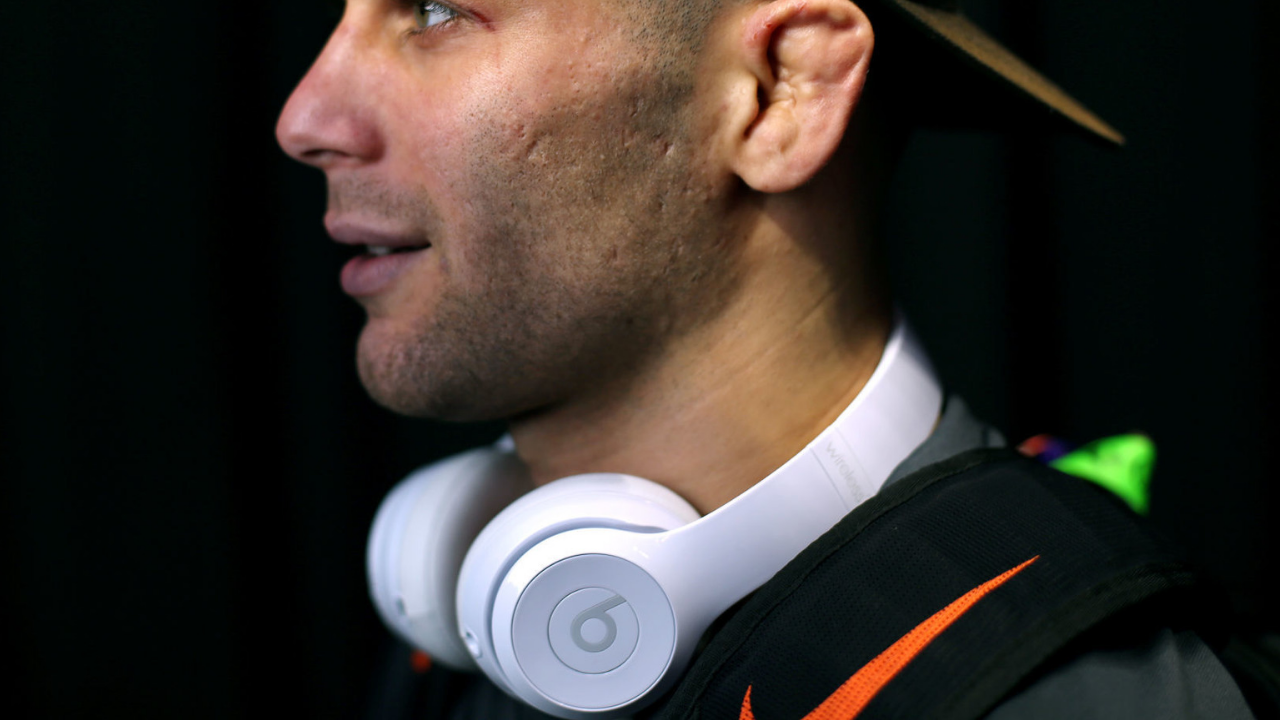Cauliflower ear may be painful and can also result in many other diseases related to your ears. However, people question whether you can get cauliflower ears from headphones use.
Indeed, we are never concerned about the problems caused by headphones; we focus on music, movies, games, or other activities we do through headphones.
You must have heard headphones can also cause various diseases like ear infections, vertigo, etc. What is cauliflower ear? Is it caused by headphones?
What Is Cauliflower Ear?

In simple words, a Cauliflower ear is an ear swollen and deformed. Repeated blows cause it to the outer ear, disrupting regular blood flow.
The blood supply to the ear cartilage is the skin on the ear’s surface. So, without proper blood flow, the cartilage can be affected and starved of vital nutrients.
As a result, the scar tissue becomes stiff and fibrous, ultimately disfigurement.
In other words, it is the blood collection between the ear’s skin and cartilage.
Significant Symptoms Of Cauliflower Ears.
- Cauliflower ear is a condition that results when the blood supply to the cartilage in the ear is disrupted.
- This can happen due to trauma, such as an injury during a fight or accident. When this happens, the cartilage can die, and the ear may collapse.
- Cauliflower ear can also be caused by chronic inflammation, such as infection or autoimmune disease.
- The most common cauliflower ear symptom is the affected ear’s deformity. The ear may appear swollen, lumpy, and misshapen. It may also be painful or tender to the touch.
- In severe cases, cauliflower ear can cause hearing loss or dizziness. If you suspect a cauliflower ear, it is essential to see a doctor treat the condition. Cauliflower ear is a condition that results when the blood supply to the cartilage in the ear is disrupted. This can happen due to trauma, such as an injury during a fight or accident. When this happens, the cartilage can die, and the ear may collapse. Cauliflower ear can also be caused by chronic inflammation, such as infection or autoimmune disease. The most common cauliflower ear symptom is the affected ear’s deformity. The ear may appear swollen, lumpy, and misshapen. It may also be painful or tender to the touch. In severe cases, cauliflower ear can cause hearing loss or dizziness. If you suspect a cauliflower ear, it is essential to see a doctor to treat the condition.
Can You Get Cauliflower Ear From Headphones Use?
An injury causes the cauliflower ear to ear. There is no solid evidence so far that headphones cause cauliflower ear.
However, it’s mere fear or myth and nothing else because no record was found regarding cauliflower ear concerning headphones.
In addition, you might have experienced an ear infection or ear pain, especially when your ears are pierced. You can feel the pain and such a difficult situation you face.
So, headphones never cause Cauliflower ear.
What Type Of Headphones Is Ideal When You’re Suffering From Cauliflower Ear?
Over-the-head Headphones
We’ve learned that headphones don’t cause cauliflower ears. However, when you’re suffering from cauliflower ear, all the headphones wouldn’t be suitable, but Over-the-head headphones are the best options.
When buying a headphone, remember that they must also have soft padding. If you buy a protective ear guards would be very beneficial for cauliflower ear prevention.
Low Volume Headphones
It is also recommended that low-volume headphones be used in this situation; high-volume headphones can further damage your ear.
They exert more pressure and, as a result, worsen the condition. Besides, low-volume headphones can comfort you when listening to music, etc.
Soft Padding
Soft or comfortable padding is one of the significant considerations while purchasing headphones. They must be smooth and convenient for your ears.
They must be fitted in without any stress and pressure on your ears. This way, you can enjoy listening to music and watching movies without discomfort. Besides, by adding protective and soft padding, you also lessen any blunt force trauma.
8 Tips To Prevent Cauliflower Ear From Headphones.

Cauliflower ear is a condition that can occur when headphones are worn for too long or at too high of a volume. The situation is caused by the build-up of earwax, which can block the ear canal and cause a Cauliflower ear. Cauliflower ear can be painful and lead to hearing loss if left untreated.
There are a few simple tips that can help prevent Cauliflower ear from occurring:
- Wear headphones that fit snugly and do not fall off easily.
- Do not wear headphones for more than two hours at a time.
- Turn the volume down to a comfortable level. The volume is too loud if you can hear the person next to you.
- Clean your headphones regularly with a soft, dry cloth.
- If you experience pain or discomfort while wearing headphones, take them off immediately. More tips are listed below.
- If you think you may have Cauliflower ear, see a doctor immediately. Cauliflower ear is usually treated with a course of antibiotics. In severe cases, surgery may be necessary to remove the build-up of earwax and relieve pressure on the ear canal.
- Preventing Cauliflower ear is the best way to avoid the condition. By following the tips above, you can help ensure that your headphones are not the cause of Cauliflower ear.
- Following these tips can help prevent Cauliflower ear from occurring. If you experience Cauliflower ear, it is essential to see a doctor as soon as possible so the condition can be treated.
How Do I Protect My Ears From Cauliflower?
Again, headphones play a vital role in this regard. The most important precaution you can take is to get appropriate headphones.
It becomes more critical when you’re just engaging in activities that can damage your ears and increase the risks, just like wrestling, rugby, boxing, and other close-contact sports.
So, it’s essential to get the perfect headset.
Can You Hear With Cauliflower Ear?
The answer is yes and no. You can have both the results depending on the situation and damage. However, cauliflower ear can have some long-term consequences.
Ear infection causes blockage and increases air pressure, which can easily cause a ruptured ear drum. You might suffer from hearing loss if you just experienced a ruptured eardrum. In this situation, the ability to listen is affected.
Can You Use Headphones With Cauliflower Ears?
If you have a cauliflower ear, you may wonder if it’s possible to use headphones. The short answer is yes, but there are a few things to remember.
First, ensuring that your headphones fit snugly and aren’t too loose is essential. They could put pressure on the affected area and worsen the condition if they’re too loose. Additionally, avoid using earbuds, as they can also aggravate the condition.
Secondly, you must be careful about how long you wear headphones. If you wear them for too long, it could lead to further irritation and inflammation. Make sure to take breaks often and give your ears a chance to rest.
If you follow these tips, you should be able to use headphones without any problems. Just be sure to listen to your body and take breaks as needed. Thanks for the great question!
FAQ
Can Headphones Change The Shape Of Your Ears?
No, not at all. Ears can’t be reshaped permanently by using headphones. There’s no scientific evidence to claim that headphones can deform your ears.
Researches prove that ears can’t be developed after the age of 10. So this is a common question, but there’s no solid evidence to prove that ears can be reshaped by using headphones.
Can Headphones Change The Shape Of Your Head?
Again, there’s no scientific reason to prove that headphones affect your head. Wearing headphones can’t change the shape of your head. If you still see any dents, you can consult with the doctor. It can be done just because of the tightness of your headphones and metal rims, but there is no need to worry because it gets normal quickly.
So, there’s no evidence regarding the reshaping of the head.
Can You Randomly Get Cauliflower Ear?
Cauliflower ear is a condition that can occur when the outer ear is damaged. This damage can be caused by repeated trauma to the ear, such as from boxing or wrestling. The cauliflower ear occurs when the cartilage in the ear is injured and begins to break down.
The cartilage then starts to grow abnormally, causing the ear to become deformed. Cauliflower ear is not only unsightly, but it can also lead to hearing loss if left untreated. Treatment for cauliflower ear typically involves draining the fluid that has accumulated in the ear and then wearing a compression bandage to help reduce swelling. In some cases, surgery may be required to correct the deformity.
Is Cauliflower Ear Reversible?
Yes, it is reversible. Cauliflower ear is a condition that results in the deformity of the ear. The ear may appear to be swollen or have a lumpy appearance. The cauliflower ear is most often caused by trauma to the ear, such as from an injury during a sports game.
The condition can also be caused by infection or surgery. Cauliflower ear is not painful, but it can impact a person’s appearance. Cauliflower ear is usually treated with surgery, but it can also be treated with steroid injections or oral medications.
So, Cauliflower ear is reversible, but it may require multiple treatments to correct the deformity.
Concluding Note
In conclusion, Can you get cauliflower ears from headphones use? I’ve already shared that there’s no solid evidence to prove this myth.
However, ear infections or ear injuries can cause such damage. In addition, you can also prevent this cauliflower ear. Besides, there are several headphones you can use when you’re suffering from cauliflower ear. In this way, you can lessen further damage.
Hopefully, you’ll find this article very informative and engaging. It’ll be helpful in the situation I’ve discussed above.



Excellent post. I definitely love this site. Continue the good work!